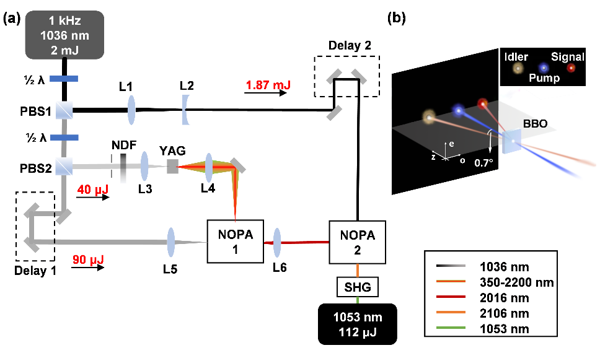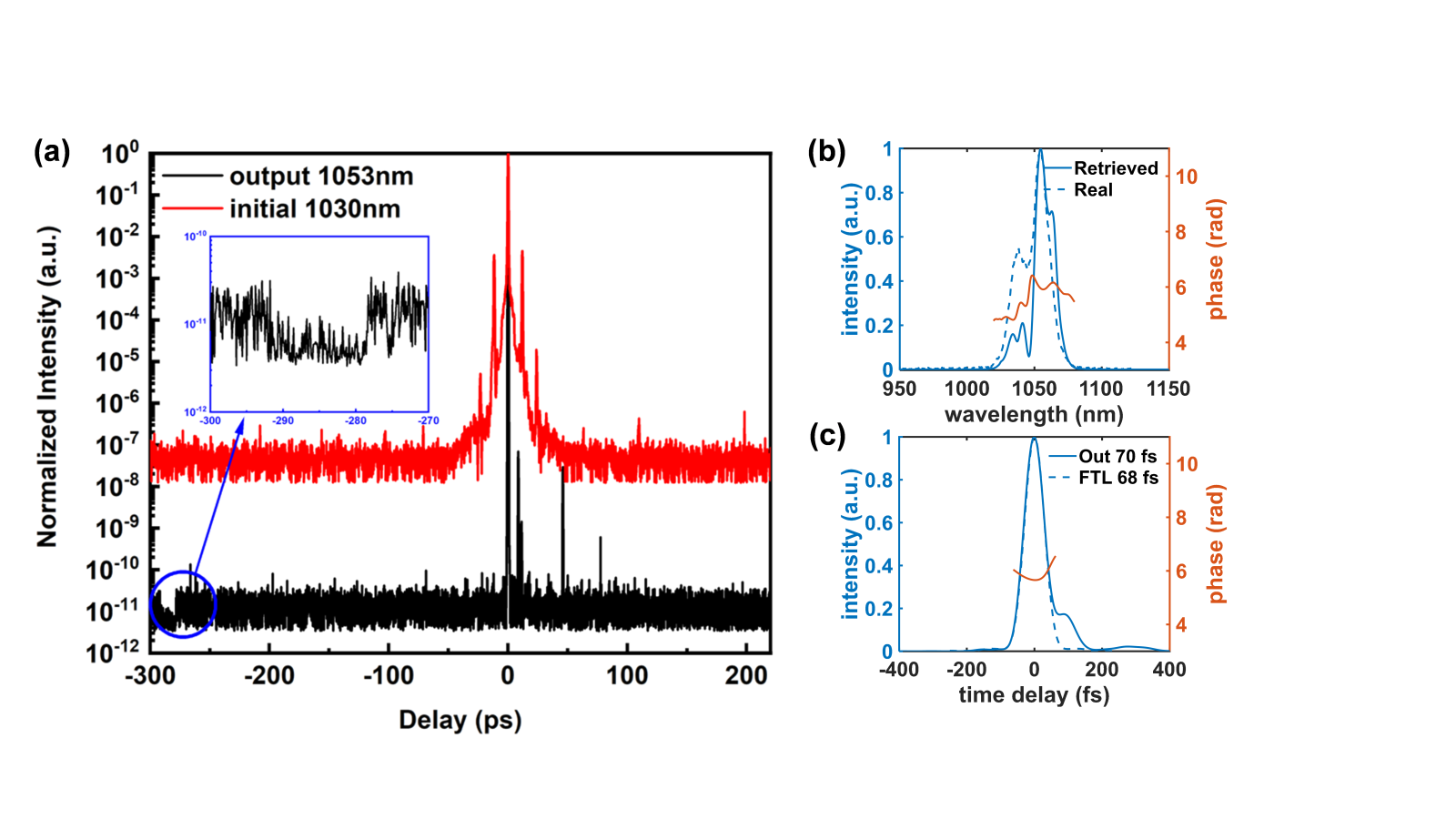Ultra-intense femtosecond laser facilities with a focusing intensity reaching 1023 W/cm2 have been generated in laboratories, which become powerful tools for the investigation of laser-matter interaction in the relativistic and even ultra-relativistic regimes. Temporal contrast is one of the most important parameters for such ultra-intense laser facilities since the pre-pulse or amplified spontaneous emission (ASE) with intensity higher than 1011 W/cm2 will ionize the target materials and affect the laser-plasma interaction experiments.
To mitigate the negative impact of the undesired pulses and ASE, a high temporal contrast laser source based on two-stage noncollinear optical parametric amplification (NOPA) combining with the second harmonic generation (SHG) is established. The related results are published in High Power Laser Science and Engineering, vol. 11, Issue 1 (Liya Shen, Yanyan Li, Wenkai Li, et al. High temporal contrast 1053 nm laser source based on optical parametric amplification and second-harmonic generation[J]. High Power Laser Science and Engineering, 2023, 11(1): 010000e1)
As shown in Fig. 1, the 170 fs, 2 mJ, and 1036 nm pulses from a Yb-doped amplifier are employed as the driven laser. After two-stage NOPA and SHG, we obtain the 112 µJ pulses with a center wavelength of 1053 nm. The results presented in Fig. 2(a), the temporal contrast has reached 1011 within 40 ps, which is limited by the dynamic range of the measurement device. In addition, the spectral bandwidth of the output laser can support a compressed pulse duration of 70 fs, as shown in Fig. 2(b)&(c).

Graphic description: Figure 1(a) The scheme of the 1053 nm laser source. (b) The schematic of the NOPA.

Graphic description: Figure 2(a) Temporal contrast of laser system output; (b) The retrieved spectrum from FROG and the actual spectrum; (c) The retrieved temporal intensity from FROG and Fourier-transformed limit pulse width.
This work provides a qualified seed source for Nd: glass-based ultraintense and ultrashort laser systems. Compared with other temporal contrast enhancement schemes, this scheme has the capability of wavelength tuning, making the whole device more flexible. At the same time, due to the characteristics of OPA, the output is passively carrier envelop phase stable, which lays the foundation for strong-field physics experiments.
Currently, this group is devoted to research on a more economical and convenient method to obtain clean pulses. Meanwhile, light-light transfer efficiency is considered to be further improved to achieve more powerful output.


